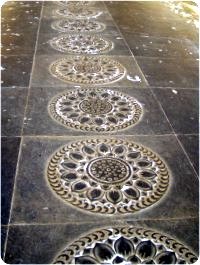A Brief History of Traditional Martial Arts
 To understand the scope and significance of the 10-year training program of the YMAA Retreat Center, it is important for everybody involved to know the history of traditional Chinese arts and culture, as well as understand Dr. Yang's unique role in leading this effort to reconnect modern martial arts to its rich heritage.
To understand the scope and significance of the 10-year training program of the YMAA Retreat Center, it is important for everybody involved to know the history of traditional Chinese arts and culture, as well as understand Dr. Yang's unique role in leading this effort to reconnect modern martial arts to its rich heritage.
In the late 1960s, China began to slowly open their doors to the West, sharing their culture and traditions with the rest of the world. Bruce Lee and others brought introduced Kung Fu to mainstream America through Hollywood, revealing the exciting and dramatic movements and techniques of martial arts. However, Kung Fu actually means "work which takes time and effort to achieve," and it is much more than just punches and kicks.
The study of Kung Fu is a way of life. It offers unparalleled health and longevity and encourages a life of self-discipline, morality, awareness, insight, compassion, and non-violence. Many advanced practitioners ultimately pursue enlightenment through their practice.
As China turned to Communism, many forms of traditional Chinese arts were forbidden and destroyed. During the Cultural Revolution, thousands of schools and written documents were burned, and the knowledge that had been accumulated for so many generations was retained by only a handful of masters in hiding. The arts that survived this era were scattered far and wide, hidden, practiced in secret, and taught only the most trusted of individuals. The island of Taiwan became a safe haven for martial artists fleeing from the chaos in China. Taiwan provided a location for the arts to grow new roots and flourish once again. In Taiwan, Dr. Yang had the opportunity to train and study under three traditional masters. During some seasons, Dr. Yang would train for 6 hours per day. Today, Dr. Yang is looking to preserve this authentic legacy and lineage through the YMAA Retreat Center.
Become involved with the YMAA Retreat Center as we work to reconnect modern martial arts to its roots. We hope to spread the benefits of traditional Chinese arts and culture for future generations.




